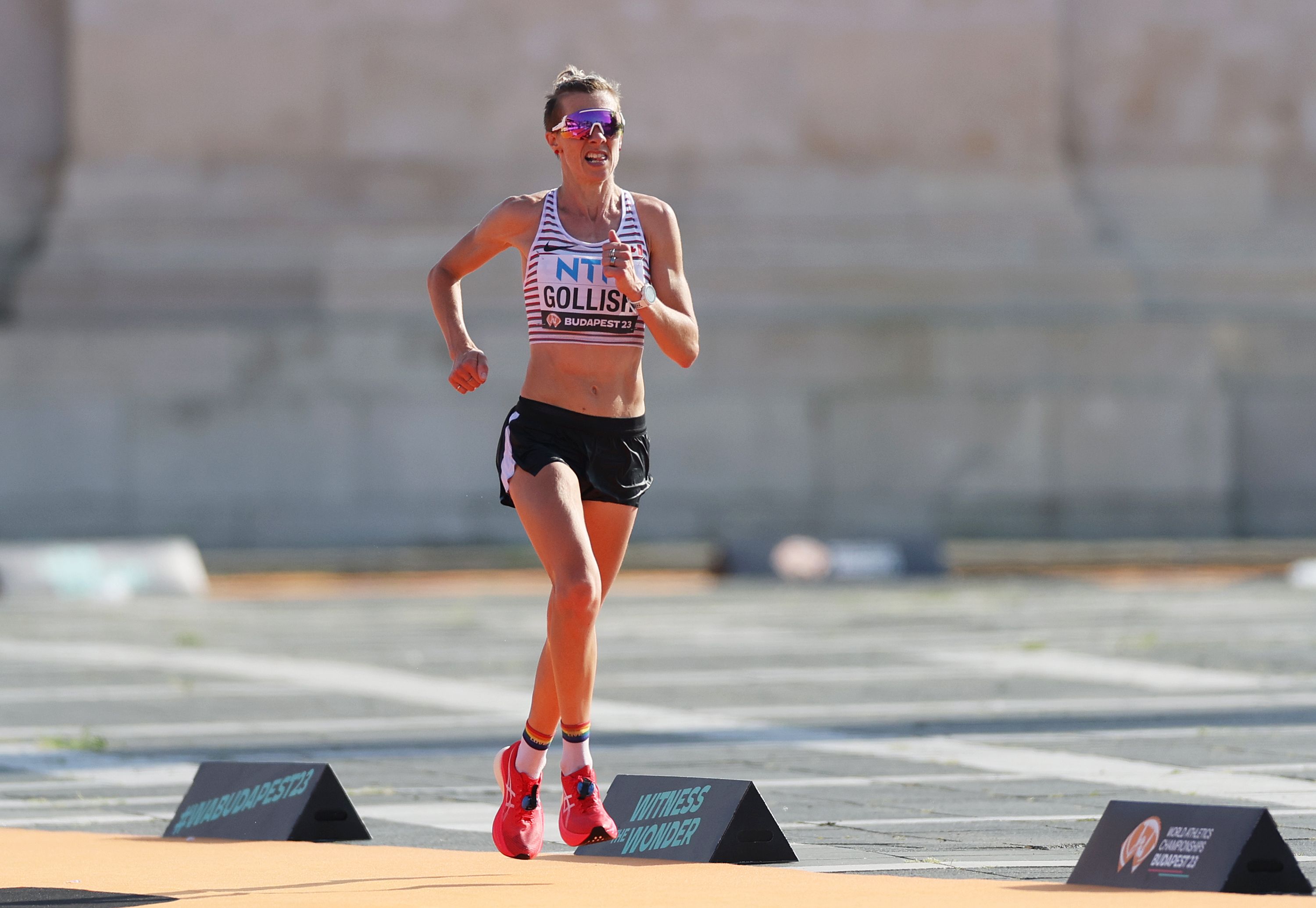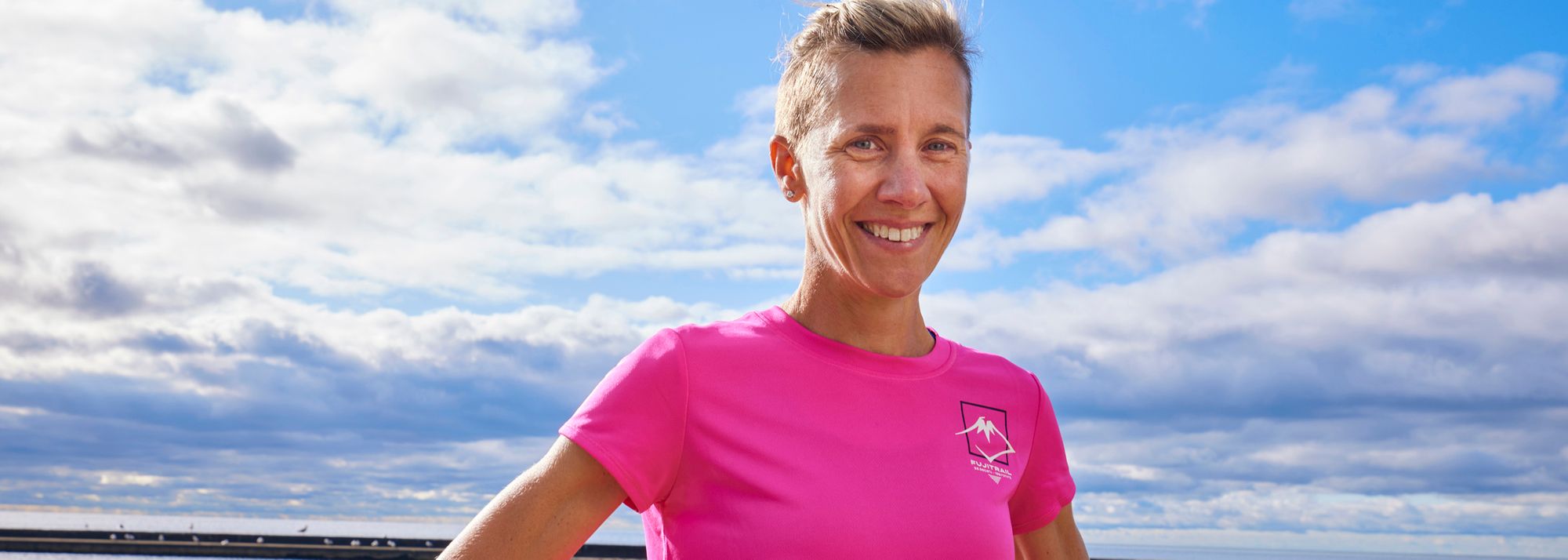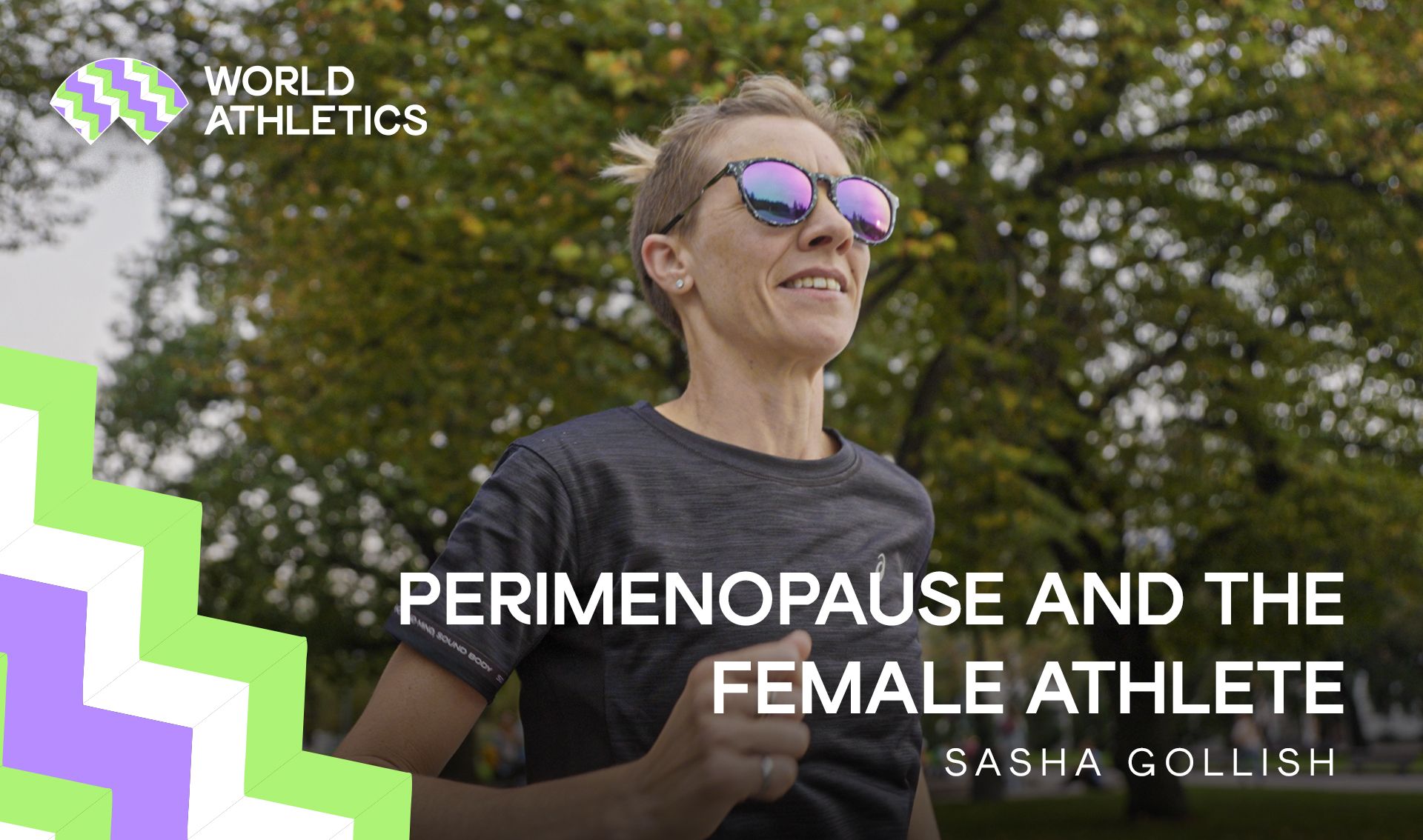Canadian distance runner Sasha Gollish (© Nikki Ross)
As we approach International Women’s Day, which in 2024 carries the campaign theme of 'Inspire Inclusion', I am reminded about how far we’ve come – yet how much work remains – when it comes to removing the bias, stereotypes, and discrimination that women still face.
While at times it can feel overwhelming, I get excited about the changes I can make in my life that I hope have an impact on those around me; to create a world where we continue to work towards equity for women.
Last year, I started to speak up about some of the challenges I found my female 41-year-old (now 42-year-old) body going through. In the years prior to that, I suffered alone in silence.
Thinking back to my biology and health education classes, we were taught that as girls go through puberty, they get their menstrual cycle, which culminates with a period approximately once a month. And that during pregnancy your period ceases as a baby grows inside you. Then, following childbirth, your normal menstrual cycle returns, and as you age your menstrual cycle reaches a complete cessation, with no discussion of what comes before or after that.
While the teachers made it seem so simple, as those with a menstrual cycle know; it is anything but simple. Life with a menstrual cycle is complicated.
More than that, what I remember is it being a taboo topic – menstrual cycles and challenges in society were not discussed. In fact, the menstrual cycle is part of us, an important naturally occurring phenomenon.
Always wanting to play with the boys, I felt even further pressure to pretend that puberty, the menstrual cycle, and using pads and tampons was not a part of my life. I hid my secret well – so well, that when my body went into perimenopause in my mid-thirties, I had no idea that it was a phase of the lifespan of the menstrual cycle. I realise now that I am not the only person who did not know about perimenopause and all the weird and wonderful things that happen during this phase of life.
Maybe you have also suffered some of these perimenopause symptoms. Going from a regular cycle and regular bleed to unpredictable periods with a varying bleed. My skin is so dry at times I feel like it flakes off in giant chunks. I have debilitating anxiety at times, and I go down the social media wormhole comparing myself to everyone else. My favourite was the disrupted sleep. Previously always an incredible sleeper, about once a month for no explicable reason I’d be staring up at the ceiling asking myself ‘why aren’t you sleeping?!’
Again, with the stigma of the menstrual cycle, I kept these symptoms to myself. Because we simplify the menstrual cycle, I went about my life having no idea what was happening to my body and the effects on my mood.
One day, amid a debilitating anxious period, knowing that humour helped me navigate sadness and frustration, I posted on social media. Just like that, my world changed. I was not alone. There were other women confident enough to share comments and others who felt more shy and shared direct messages; but regardless, I found a community – many of them runners – who were going through similar challenges and shared their own journeys.
While I navigate this space of perimenopause, it is not all sunshine and roses, especially when it comes to training. Back in October at the World Athletics Road Running Championships in Riga, I was in a park recording something about what I was going through. A gaggle of girls walked by and the look on their faces – we all locked eyes, immediately connecting to know we were not alone. Those women caught me talking about my mashed potato muscles, wrapped in burlap sacks, about not feeling like you have control of your body. Next, they heard about ‘crime scene level’ periods. While they may have been shocked – because again, we feel we cannot talk about these types of things – they felt seen.
It is during these moments that I believe my voice will help change someone’s world and, if I’m lucky, that collectively we can use our voice to destigmatise the menstrual cycle and the challenges unique to female biological hormone cycles. Collectively we – not just women, but everyone – can help to remove the bias, the stereotypes, and the discrimination that women continue to face.

Sasha Gollish in the marathon at the World Athletics Championships Budapest 23 (© Getty Images)
My 2024 mantra is ‘strong women, empowering strong women.’ Just like you, I have moments when I do not feel strong, where my confidence wavers and my body goes through changes during which I just don’t feel like myself. What I now know in these moments is that I am surrounded by strong women, who remind me and empower me to be the strong woman that I am. There are a whole bunch of you I look to as role models, too, when I need a boost of motivation.
From the research I do, I know how important role models are to motivate and inspire. In some recent research, the ASICS Move Her Mind study revealed that women not only continue to report gendered expectations that impact their time to exercise or play sport, but that women look to role models who look like themselves. I hope that through the diversity of my work and who I am, that some aspect of me speaks to you. In addition, I will work towards amplifying diverse voices to inspire inclusion and help more women feel motivated to join the exercise and play space. I know personally, and again in my research, that physical activity improves our mental health.
Yet, as I return to my new normal of running, and look to my peers for inspiration, I can get caught up in the cycle of comparison. It’s not just the comparison to what these women are doing but a comparison to a previous version of my running self. Running looks a little different these days, one less big, intense workout a week and more cross-training, adjusting what was my usual runs to the new normal, generally a bit shorter and sometimes a bit slower. I have to give myself grace on days, when my hormones are still out of whack and just won’t let me perform, and let me tell you that’s crushing when the hormone drop happens on race day. Layer on my changing body and adjusting my mental performance tool set with a lot more self-compassion for acceptance of this changing body, despite feeling the pressure of gendered expectations on how ‘I’m supposed to look.’ I’m thankful for what my body allows me to do, my head and my heart just need a little bit more time to catch up.
In celebration of the 2024 International Women’s Day #InspireInclusion campaign, I know that while we may not be the same, while our lives might be very different, at the foundation we have something in common, something to share. Because of this, we can empower each other, which I hope will inspire more inclusion. I want to knit the world together and if you’re reading this – regardless of gender and if you have a menstrual cycle – I know that our common thread is running and track and field, a beautiful community of unique individuals.
Globally, there is a push from the industry to do more to promote a diversity of women into leadership positions. From the work I do in the Mental Health and Physical Activities Research Centre (MPARC) at the University of Toronto in Canada, we know that role models are key to inspiring others to move their bodies. We know that women want to see other women who look like them across social and traditional media. We also know that women and girls face more barriers to physical activity compared to men and boys. As we continue to research the barriers and benefits to exercise, we’re also leaning on industry to learn from their research.
In 2023, World Athletics partner ASICS commissioned a study led by Dr Dee Dlugonski and Dr Brendon Stubbs – the Move Every Mind study – to better understand the gender exercise gap. And in 2021 ASICS ran the Move Your Mind study, establishing the well-researched connection and benefits between mental health and physical activity. Our research in MPARC supports this finding. While the group found that physical activity benefits mental health, there was also a notable gap between men and women when it comes to exercise; men had more time and opportunity to be active compared to women.
In the follow-up study, which launched on 27 February, the Move Her Mind study hosted 26 focus groups across the globe and surveyed more than 24,000 people in 47 different countries to better understand the barriers women face globally when it comes to exercise. From the research findings, Dlugonski offered the following key insights:
- Regardless of their level of activity, women are facing barriers to being as active as they would like to be.
- Many women reported experiencing gendered expectations that impacted the time they had free to either exercise or play sport.
- Friends, partners and parents have a significant influence on the amount (or lack) of exercise girls and women engage in during their everyday lives.
As a community engagement and knowledge translation expert, my passion is turning these key insights into actionable items. How can you help yourself or help the women in your life to be more active?

Canadian distance runner Sasha Gollish (© Nikki Ross)
To help women reach the activity levels they desire, we need to first ask them what they want and what barriers they perceive to be facing.
In addressing the second key insight from Dlugonski, we need to help women give themselves permission to choose exercise over typical gendered roles, such as helping children with homework, cleaning the home, or managing the family’s daily calendars. Partners should not just encourage women to chase their desired exercise levels but can help by taking on some of these tasks. And while it takes courage, I encourage my female friends to communicate to their families, parents, children, and partners what they need.
The final insight comes back to role modelling. Across all of its channels, World Athletics continues to use a diversity of voices, bodies, and experiences in its story telling. In addition, we can all follow and amplify social media voices that are more diverse. Some of my favourite runners and athletes to follow include @TheMirnavator, @ marissa_paps, and Siobhan Coleman (@_Running_For_My_Life).
My own trajectory to elite running is different than most. While I did focus in on running in my varsity career, after my second year of university I stepped away from high-performance athletics and focused on my alpine ski coaching career, my education, and eventually my professional engineering career.
Fast forward to 32, when I returned to the elite side of the sport. The short story is I quit my engineering job to pursue high-performance athletics and picked up a PhD in Civil Engineering to keep my toe in the engineering world and my brain occupied between sessions. I won a bronze medal at the 2015 Pan American Games at the first track I ever raced a track race, at York University, in my hometown of Toronto, despite losing a shoe early in the race. And while the rest of my career has not always played out as a fairy-tale, it’s been an incredible journey that I feel privileged to have been on. From travelling the world to meeting new people, and defying the expectations we have for older runners, particularly women, it’s an honour to don the national jersey to step up to a start line to see what my body can do.
Sasha Gollish for World Athletics






